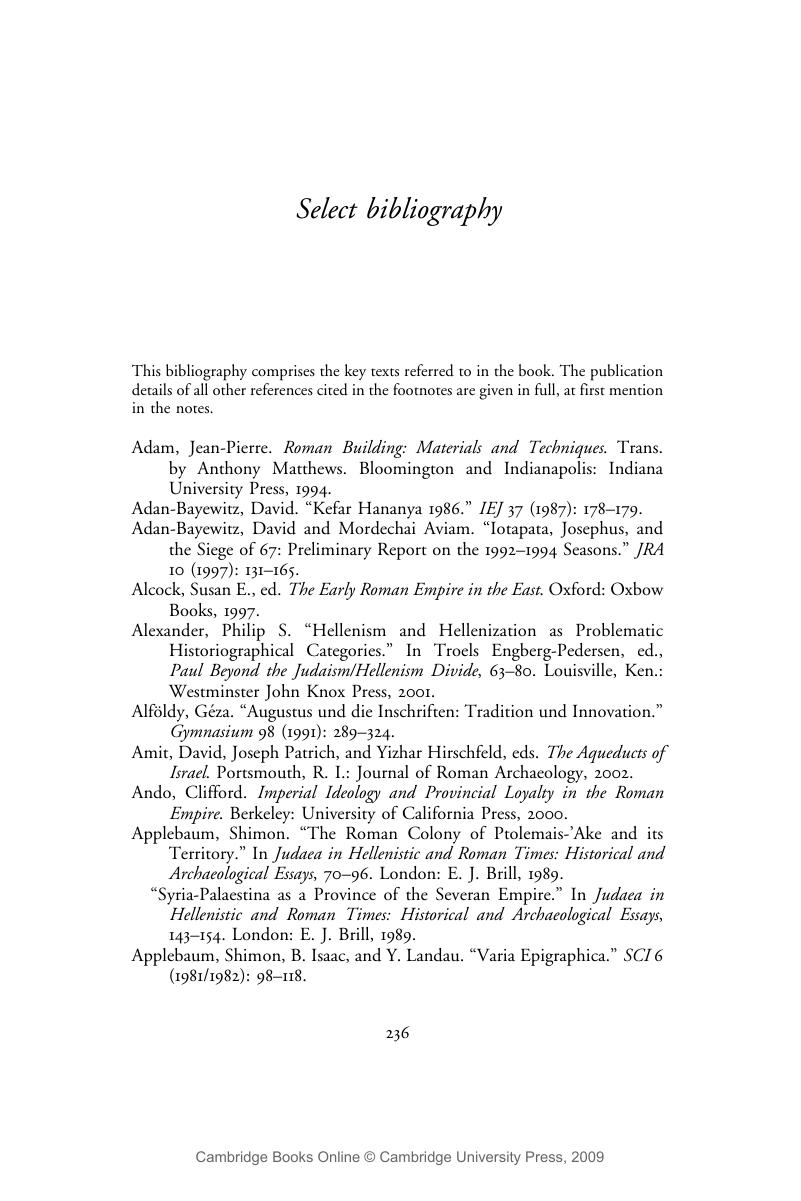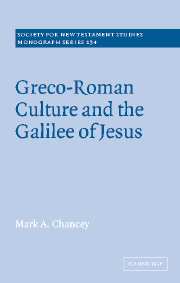Book contents
- Frontmatter
- Contents
- Preface
- Abbreviations
- Map of Galilee and northern Palestine
- Introduction
- 1 Galilee's early encounter with Hellenism
- 2 The Roman army in Palestine
- 3 The introduction of Greco-Roman architecture
- 4 The transformation of the landscape in the second and third centuries CE
- 5 The use of Greek in Jesus' Galilee
- 6 The coinage of Galilee
- 7 Greco-Roman art and the shifting limits of acceptability
- 8 Conclusion
- Appendix: Galilean names in the first century CE
- Select bibliography
- Index of passages
- Selective index of places
- Index of people and topics
- References
Select bibliography
Published online by Cambridge University Press: 22 September 2009
- Frontmatter
- Contents
- Preface
- Abbreviations
- Map of Galilee and northern Palestine
- Introduction
- 1 Galilee's early encounter with Hellenism
- 2 The Roman army in Palestine
- 3 The introduction of Greco-Roman architecture
- 4 The transformation of the landscape in the second and third centuries CE
- 5 The use of Greek in Jesus' Galilee
- 6 The coinage of Galilee
- 7 Greco-Roman art and the shifting limits of acceptability
- 8 Conclusion
- Appendix: Galilean names in the first century CE
- Select bibliography
- Index of passages
- Selective index of places
- Index of people and topics
- References
Summary

- Type
- Chapter
- Information
- Greco-Roman Culture and the Galilee of Jesus , pp. 236 - 274Publisher: Cambridge University PressPrint publication year: 2005



